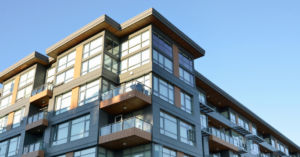Housing Shortfall in Dire Need of Correction
A May 16, 2022 Wall Street Journal opinion essay by Suzanne P. Clark and Brian Deese points out the sizeable housing shortage that is gripping the nation, adding to inflationary pressures and extracting a real cost to economic output which they say has been estimated at $400 billion per annum or 2% of foregone economic growth per year. The authors rightly point out that the genesis of this current housing crisis had its roots in the housing debacle of 2008/09 which led to a decade of underbuilding across the country. The article references a 1.5-million-unit shortfall in housing which needs to be corrected.
Proposed Process of Correction
Clark and Deese outline a three-pronged approach to fixing the housing shortage which they claim can be achieved in a bi-partisan fashion through the coordinated efforts of the White House, Congress, state/local leaders and the private sector. Step one is to eliminate the barriers to housing production which are identified primarily as exclusionary zoning laws such as “minimum lot sizes, mandatory parking requirements and prohibitions on multifamily housing”. Step two is to address the “other” constraints to the production cycle such as rising materials and labor costs. Step three is to make it easier for developers to finance new housing through the creation and expansion of federal tax credits.[1]
Difficult Barriers for Change
While we are encouraged that high-profile, Washington D.C. insiders are speaking with one voice on the very important topic of increasing the supply of affordable housing we would point out that achieving this goal will be difficult. The “not in my backyard” (NIMBY) zoning laws have been in place for many decades and while there have been some select “green shoots” recently to overturn some of these laws, it will remain an uphill battle. Wealthier, more established residents simply have a louder political voice in local and state politics and their primary objective is usually to maintain barriers to entry, keep property values high and ward-off the “threat” of densification. There is an evolution and education process which needs to occur such that existing residents do not feel threatened by densification nor lower-income, more fragile long-time residents threatened by gentrification. This balancing act will be extremely difficult, or impossible to achieve at the Federal level, and will likely require a grass-roots effort amongst leaders, activists and developers at the local level.
Recent Economic Constraints are Prohibiting Growth
Supply constraints and labor shortages within the housing industry mirror the many challenges being felt today across most industries. The domestic and international impacts of the pandemic have weighed on supply chains for the better part of two years, and these strains have been particularly acute in the commodity categories which are vital to the construction trades. Procuring reliable skilled and unskilled labor has also been a prevailing challenge for the industry and this challenge does not appear to be abating in the near term. The WSJ article does make reference to programs which could fast-track more young people towards the construction trades. While it will likely take some time before reaping the benefits of enhanced commitments to vocational or trade school programs, this does seem like a worthwhile investment at all levels of government and the private sector.
A Low- and Middle-Income Family Housing Financing Solution
The final measure referenced by the authors, the financing of low- and middle-income family housing has also proven to be elusive and difficult in execution. The public sector has a very “mixed” track record in developing and operating this type of housing, and the private sector hasn’t been much better. One encouraging footnote has been the emergence in recent years of “social” investing capital which had its roots in Community Reinvestment Act (CRA) and Community Development Financial Institutions (CDFI) funding sources and now teams with sophisticated philanthropic capital to provide debt and equity financing within the affordable housing sector.
Political Class to Address Challenges
In the final analysis, we are encouraged to see the political class come together to try and address the debilitating challenges brought forth by the housing shortage and are pleased that the discussion is centered upon removing the barriers to supply and not on policies which would inhibit supply and competition such as rent control and permanent moratoriums on rent collections
Footnotes:
[1] Wall Street Journal: May 16, 2022; America Needs More Houses by Suzanne P. Clark and Brian Deese
Investors should consider the investment objectives, risks, charges and expenses carefully before investing. For a prospectus or summary prospectus with this and other information about the Fund, please call (800) 693- 8288 or visit our website at www.armadaetfs.com. Read the prospectus or summary prospectus carefully before investing.
Investments involve risk. Principal loss is possible
Distributed by Foreside Fund Services, LLC.



